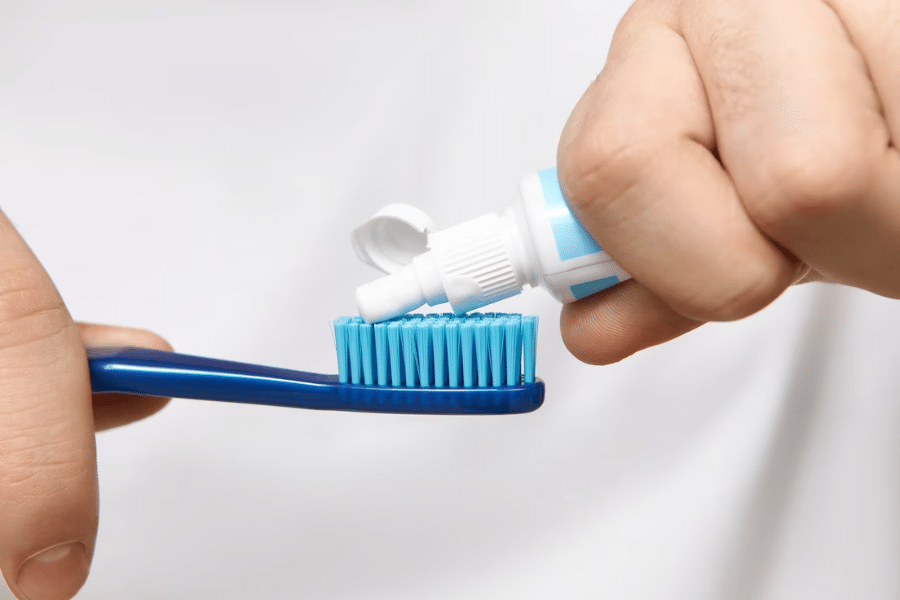Fluoride has been hailed as a hero, shielding our teeth from decay and cavities. However, like any hero, fluoride has its dark side, especially when it comes to children’s toothpaste. While fluoride offers undeniable benefits, its excessive use, particularly among children, can pose risks that often go unnoticed. In this guide, we will delve into the potential hazards of fluoridated toothpaste among our little ones, shedding light on what parents need to know to safeguard their children’s oral health.
Understanding Fluoride
Fluoride, a naturally occurring mineral, has long been revered for its ability to strengthen tooth enamel and fend off tooth decay. It is a staple ingredient in many toothpaste brands, touted for its cavity-fighting prowess. However, its effectiveness hinges on moderation. When used in excess, fluoride can lead to a condition known as dental fluorosis, characterized by white streaks or spots on the teeth. While typically harmless, severe cases can cause enamel pitting and discoloration, marring the appearance of a child’s smile.
Risks for Children
Children, with their smaller size and developing bodies, are particularly vulnerable to the adverse effects of fluoride. Swallowing even a pea-sized amount of fluoridated toothpaste can exceed their recommended daily intake, increasing the likelihood of fluorosis. What is more, children can only sometimes rinse and spit proficiently, inadvertently ingesting more toothpaste than intended. This overexposure, compounded over time, raises concerns about the long-term impact on their dental health. Using fluoride toothpaste for babies under 12 months might lead to more chances of fluorosis. Picking fluoride levels for kids under 6 is about finding a balance between preventing cavities and avoiding mild fluorosis (Wong et al., 2011).
Symptoms of Overexposure
Recognizing the signs of fluoride overexposure is crucial for early intervention. Symptoms of dental fluorosis include white streaks or spots on the teeth, ranging from mild to severe. In severe cases, the enamel may become rough and pitted, affecting the tooth’s appearance and structural integrity. While fluorosis does not typically cause pain or discomfort, its cosmetic implications can have a profound impact on a child’s self-esteem and confidence. When picking toothpaste for kids under 6, think about the risk of fluorosis if you go for ones with 1000 ppm fluoride or more. The findings back up the idea that 1000 ppm fluoride is cool for younger kids and older ones can handle up to 1500 ppm (Wong et al., 2011).
Preventive Measures
To mitigate the risks associated with fluoridated toothpaste, parents can take proactive steps to safeguard their children’s oral health. Firstly, it is essential to supervise brushing sessions, ensuring that only a pea-sized amount of toothpaste is used. Encouraging children to spit out excess toothpaste rather than swallowing it can help minimize their fluoride intake.
Using fluoride to keep your teeth healthy has always been about finding the right balance. It is a trade-off between preventing cavities and avoiding fluorosis. Keeping an eye on how much fluoride kids are exposed to is crucial. We want to make sure it helps prevent cavities without causing any problems. In the first few years of life, fluoride can go both ways when it comes to oral health.
On the plus side, it helps protect baby teeth as they come in, making the mouth more friendly to them. This early protection against cavities is really important, and it can even predict how likely it is for someone to get cavities later on (Do & Spencer, 2007).
Fluoridated toothpaste stands as a cornerstone of modern dental care, offering invaluable protection against tooth decay and cavities. However, its benefits must be weighed against the potential risks, particularly among children. By understanding the dangers of excessive fluoride exposure and implementing preventive measures, parents can navigate the dental landscape with confidence, ensuring their children’s smiles remain bright and healthy for years to come. Let us embrace fluoride as the ally it is, but with caution and mindfulness, ensuring that its benefits far outweigh its pitfalls in the journey towards optimal oral health.
References
Wong, M. C. M., Clarkson, J., Glenny, A. M., Lo, E. C. M., Marinho, V. C. C., Tsang, B. W. K., … & Worthington, H. V. (2011). Cochrane reviews on the benefits/risks of fluoride toothpastes. Journal of dental research, 90(5), 573-579.
Ganss, C., Lussi, A., Grunau, O., Klimek, J., & Schlüter, N. (2011). Conventional and anti-erosion fluoride toothpastes: effect on enamel erosion and erosion-abrasion. Caries research, 45(6), 581-589.
Do, L. G., & Spencer, A. J. (2007). Risk-benefit balance in the use of fluoride among young children. Journal of dental research, 86(8), 723-728.



